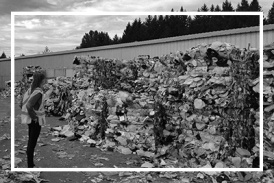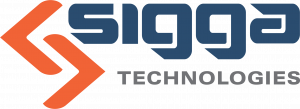Sigga Achieves Exacting SOC 2 Compliance for EAM Solution Suite
Final audit report finds no exceptions across Security, Availability, Confidentiality, Processing Integrity and Privacy criteria.
The provider of industry-leading, SAP-integrated EAM suite passed the final third-party audit to achieve compliance with no exceptions, or nonconformities, across the five trust services criteria.
“Zero nonconformities is an exceptional accomplishment,” said Sigga Chief Executive Officer Rohan Bairat. “This milestone reflects not just our commitment to security and trust, but also our ability to execute with discipline and cross-functional alignment.
“This sets a new benchmark for operational excellence at Sigga.”
The SOC 2, or Systems and Organization Controls, 2 certification recognizes Sigga for adhering to standards set by the American Institute of Certified Public Accountants. It is considered a gold standard for IT organizations looking to demonstrate a commitment to security.
The SOC 2 Type II achievement also shows not only strong design but operational effectiveness by looking at Sigga’s performance over several months. Teams across the company worked to align processes to the SOC 2 framework, expanding on an already existing ISO 27001 certification.
This kind of cybersecurity-first approach is critical for customers in regulated industries, who want to see vendors handle their data securely. The average cost of data breaches worldwide reached nearly $5 million in 2024 with Expectation of global cybercrime costs to grow by 15 percent per year over the next five years, reaching $10.5 trillion USD annually by 2025.
About Sigga:
Sigga Technologies brings more than 20 years of experience in transforming maintenance operations at asset-intensive companies. Sigga’s industry-leading applications are flexible, modern and built to accelerate digital transformation. Its mobile maintenance and planning and scheduling tools help companies remove maintenance inefficiencies, optimize maintenance planning and scheduling and quickly adapt to changing business needs over time and across locations.
Matt Sickler
Sigga Tehcnologies
+1 8645697045
email us here
Visit us on social media:
LinkedIn
YouTube
Legal Disclaimer:
EIN Presswire provides this news content "as is" without warranty of any kind. We do not accept any responsibility or liability for the accuracy, content, images, videos, licenses, completeness, legality, or reliability of the information contained in this article. If you have any complaints or copyright issues related to this article, kindly contact the author above.
Dialogue with Three Chords and brooklynONE Productions Celebrate Pride Month with Night of Original Theatre
Business Solutions Marketing Group Unveils AI Video Marketing Program: Propelling Small Businesses to Google Page ONE
Eylsia, Rising Filipina Pop Artist, Explores the Promise and Challenges of AI in Music
Kalendarium
Więcej ważnych informacji
 Jedynka Newserii
Jedynka Newserii

 Jedynka Newserii
Jedynka Newserii

Handel

Ze względu na różnice w cenach surowce wtórne przegrywają z pierwotnymi. To powoduje problemy branży recyklingowej
Rozporządzenie PPWR stawia ambitne cele w zakresie wykorzystania recyklatów w poszczególnych rodzajach opakowań. To będzie oznaczało wzrost popytu na materiały wtórne pochodzące z recyklingu. Obecnie problemy branży recyklingu mogą spowodować, że popyt będzie zaspokajany głównie przez import. Dziś do dobrowolnego wykorzystania recyklatów nie zachęcają przede wszystkim ceny – surowiec pierwotny można kupić taniej niż ten z recyklingu.
Przemysł spożywczy
Rośnie presja konkurencyjna na unijne rolnictwo. Bez rekompensat sytuacja rolników może się pogarszać

Rolnictwo i żywność, w tym rybołówstwo, są sektorami strategicznymi dla UE. System rolno-spożywczy, oparty na jednolitym rynku europejskim, wytwarza ponad 900 mld euro wartości dodanej. Jego konkurencyjność stoi jednak przed wieloma wyzwaniami – to przede wszystkim eksport z Ukrainy i niedługo także z krajów Mercosur, a także presja związana z oczekiwaniami konsumentów i Zielonym Ładem. Bez rekompensat rolnikom może być trudno tym wyzwaniom sprostać.
Transport
Infrastruktury ładowania elektryków przybywa w szybkim tempie. Inwestorzy jednak napotykają szereg barier

Liczba punktów ładowania samochodów elektrycznych wynosi dziś ok. 10 tys., a tempo wzrostu wynosi ok. 50 proc. r/r. Dynamika ta przez wiele miesięcy była wyższa niż wyniki samego rynku samochodów elektrycznych, na które w poprzednim roku wpływało zawieszenie rządowych dopłat do zakupu elektryka. Pierwszy kwartał br. zamknął się 22-proc. wzrostem liczby rejestracji w ujęciu rocznym, ale kwiecień przyniósł już wyraźne odbicie – o 100 proc.
Partner serwisu
Szkolenia

Akademia Newserii
Akademia Newserii to projekt, w ramach którego najlepsi polscy dziennikarze biznesowi, giełdowi oraz lifestylowi, a także szkoleniowcy z wieloletnim doświadczeniem dzielą się swoją wiedzą nt. pracy z mediami.









.gif)

 |
| |
| |
|